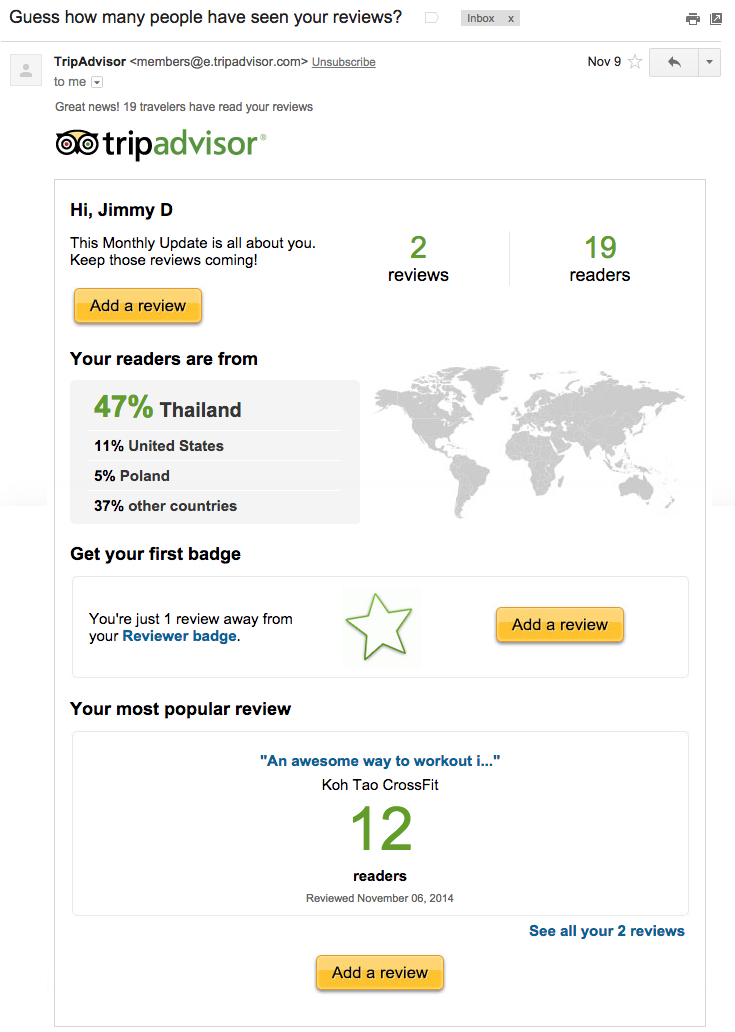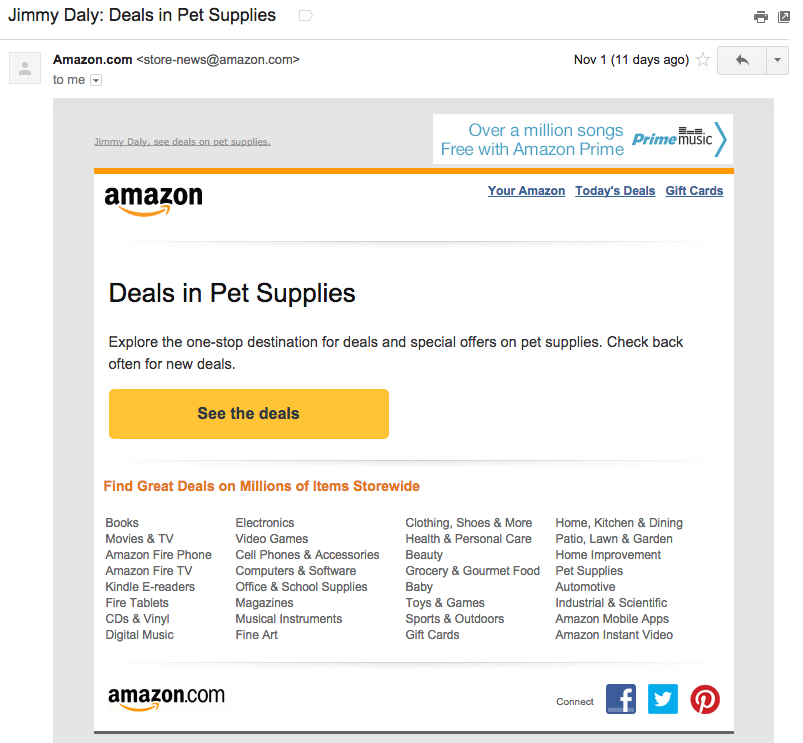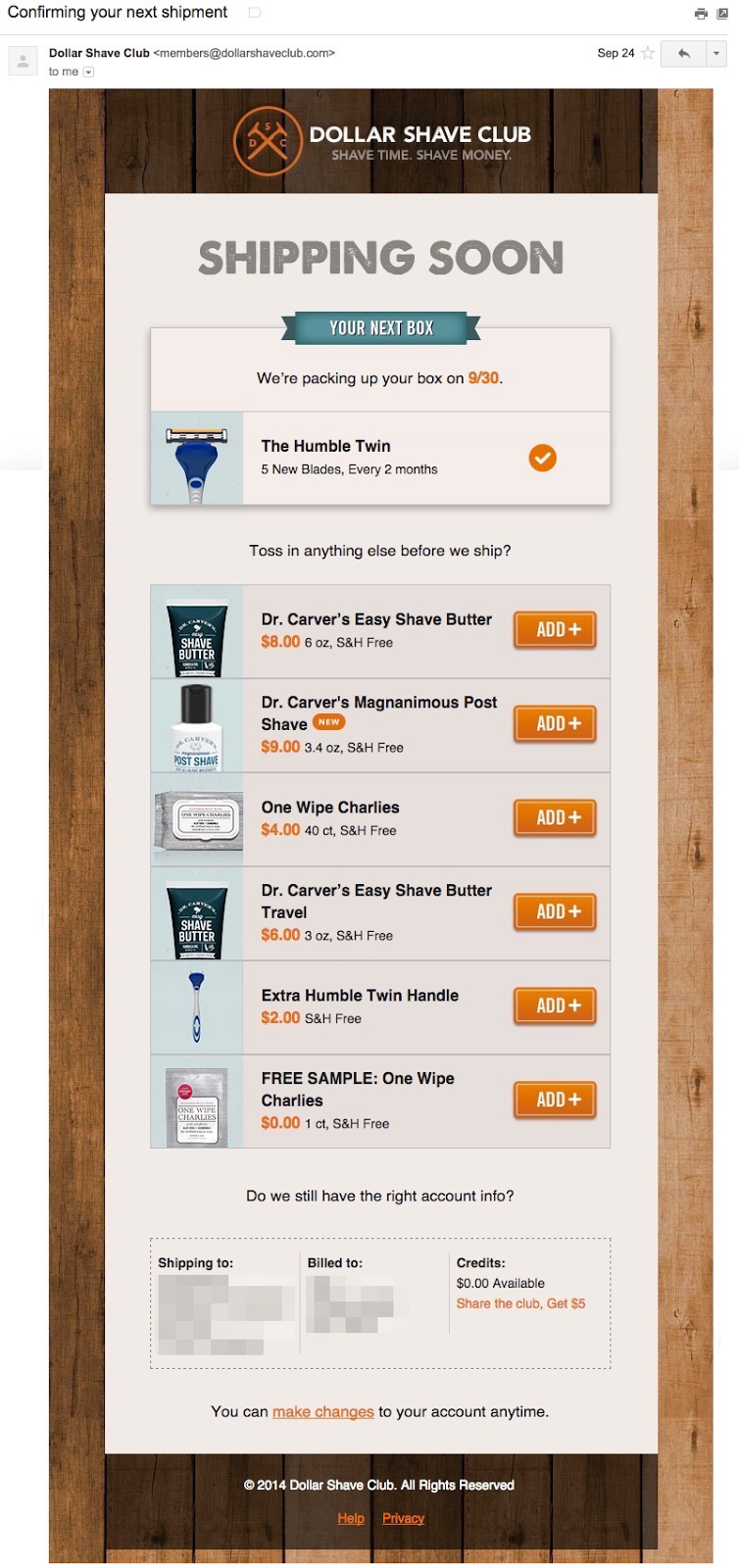Behavioral Email Marketing : How to Send Emails That Will Boost Your Conversions
-
UncategorizedUpdatedPosted:
On this page
If you’re sending bulk email, there are only a few ways to increase conversions. You could work on your subject lines, spruce up your copy, segment your list, redesign the emails or improve your call to action.
Those are all recommended ways to optimize the email marketing process. But instead of looking for marginal gains in your email marketing, why not take a page from Google’s 10x strategy?
The way [Google CEO and cofounder Larry] Page sees it, a 10 percent improvement means that you’re basically doing the same thing as everybody else. You probably won’t fail spectacularly, but you are guaranteed not to succeed wildly.
Thousand-percent improvement requires rethinking problems entirely, exploring the edges of what’s technically possible, and having a lot more fun in the process.
Transactional emails are opened at up to 8x the rate as promotional emails. And that’s a massive opportunity for email marketers.
Triggered email is the process of tracking user behavior on your site and triggering emails as a result of specific actions. (Think of abandoned shopping cart emails on steroids.) It’s the key to unlocking higher open and click rates but, more importantly, it’s the best way to dramatically improve conversions from your emails.
In this post, I’ll go over a few examples of companies that are killing it with triggered email, then show you how to get started with this email game-changer.
1. TripAdvisor: The ‘Monthly Report’ Email
TripAdvisor sends their users a lot of emails but all of them are highly personalized and triggered as a result of action. As a result, their emails are expected. They have context. This is an unfair advantage for TripAdvisor.
A quick scan of my inbox reveals 62 emails from TripAdvisor since January. That’s quite a few. A closer look reveals that the emails have gotten more personalized over time. They started with “Here are flight deals from Tucson” (where I live) and now send emails telling me what my Facebook friends who live nearby are doing on TripAdvisor. It’s amazing to watch.
The email below is a great example of a triggered, personalized email.

Let’s break this email down.
- It’s essentially an overview of my “analytics”. It’s the type of email you get from Google Analytics each month. It looks and feels like a report, not a marketing email. (As far as I can tell, this is not actually a monthly report. I’ve been a user for nearly a year and this is the first one I’ve received.)
- It makes me feel really good about my contribution. I wrote a quick review and now people all over the world have read it. That’s really cool, and it makes me want to write another.
- Speaking of which, there are three strong calls to action in this email. No matter where your eyes are on the email, you’re never too far a yellow box encouraging you to write another review.
The conversion goal here is obviously to get users to write more reviews. To that end, TripAdvisor has a done a few key things.
First, they waited until I’d been inactive for about four days. They know that I’ve researched other places on their site and they want to me to write reviews about them. It’s just the right amount of time. They know my travels are still fresh in my mind but they aren’t bombarding me with too many emails.
Second, they’ve engineered a sophisticated process to increase conversions. The entire review process is gamified. When I log-in to TripAdvisor, I can earn badges, see a map of where I’ve traveled, see stats about how many people have read my reviews and where all my Facebook friends have traveled. The act of leaving a review makes the user feel like they are contributing to a global community of travelers, not succumbing to the wishes of some corporation. It’s a beautifully designed process.
2. Amazon: The ‘Car Salesman’ Email
Here’s a Jeff Bezos quote that I absolutely love:
“Maintain a firm grasp of the obvious at all times.”
The email example below is wonderful representation of that philosophy.

There’s an episode of This American Life that documents the inner-workings of car dealerships. It’s a great episode and in it, a veteran car salesman offers advice to his crew:
A customer says they’re not ready to buy a car. Let’s go over it again. They’re at a car dealership. They got in their car, drove through hell to get here, looked for a parking spot for ten minutes, parked, got out of the car and walked into a car dealer. Not because the coffee’s good, we went over this, because the coffee here’s not good. They came here because we sell cars and they want to buy one.
Now, how does that apply to the email from Amazon?
- The email was triggered a direct result of browsing activity on Amazon. Truth be told, I was looking at Halloween costumes for my dog, along with a few chew toys. Amazon has proof that I’m interested in pet supplies.
- If I’d been at a car dealership, a salesman might have offered to bargain a little on the price of the car. In this case, since I’m on a website and not in a store, Amazon uses email to send that message. They’re saying, “We know you need stuff for your dog, so why not save a few bucks?”
- The other great thing about this email is it’s simplicity. All your attention focuses on the button – “See the deals” – which re-engages the customer in the shopping experience.
An email like this is nearly guaranteed to increase sales conversions. Consider that when you send an email blast to a massive list, you are just guessing that the message might resonate with a handful of the recipients. But when you let customers trigger emails at strategic places in their purchasing cycle, you have a much greater chance at moving them closer to the end of the funnel.
I dove deep into Amazon’s email marketing on the Vero blog. Check it out for way more insight into their email strategy.
3. Dollar Shave Club: The ‘Just Making Sure’ Email
Dollar Shave Club is the SaaS of shaving. They deliver razors and shaving supplies on a monthly basis and you can scale up or down as needed. (Way more on their business here.)
Before each shipment, they send an email just making sure you don’t need anything else.

I love this this email, and here’s why:
- It’s triggered six days before the shipment. It’s a reminder that you have something to look forward to soon and that there are lots of others things you can add on. The level of urgency is just right.
- It reminds me of candy bars in the checkout line at the grocery store. No one needs them but hey, they’re cheap and oh-so-good, so why not?
- It doesn’t feel like I’m being sold to. That’s largely a result of the rest of Dollar Shave Club experience. The site and emails are always witty, the package contains a newsletter called “The Bathroom Minutes” and the products are pretty good. Overall, I really enjoy being part of Dollar Shave Club so when it comes time for the upsell, it’s not offensive.
Getting Started with Behavioral Email
I know what you’re thinking: “These are massive companies with equally large marketing budgets. How am I supposed to send emails like this?”
The good news is that anyone can increase their conversions with behavioral email. You might not have as much data as TripAdvisor or Amazon, but every business can send behavioral emails at some level.
Here are a few suggestions for getting started.
Insert messages at key points in the customer lifecycle.
Recently on the HelpScout blog, Samuel Hulick perfectly described how lifecycle emails should work:
You want to craft your strategy around key moments in the lifecycle and approach each email from a perspective of being as helpful as possible within that moment, not as a mosquito in their ear.
On the highway to user/product love, lifecycle emails are road signs providing timely guidance, not annoying billboards.
So even if your process isn’t sophisticated, start thinking about where your users need a nudge in the buying cycle. Increasing conversions is all about communicating at the right time.
Start tracking user behavior.
There are so many ways to gather data on your users and customers. While free tools like Google Analytics are a great place to start, there are more advanced tools that will enable you to keep track of individual users. Tools like MixPanel and KISSmetrics provide tons of data triggered email platforms, which are much more accessible and affordable that you might imagine, can help you send emails as a result of the data you collect.
You can’t become TripAdvisor overnight, but you can start improving conversion rates with simple behavioral tracking almost immediately.
Get creative about personalization.
Including {{user.First_name}} in your emails is not personalization. It’s time we as email marketers held ourselves to a higher standard.
Real personalization is one-to-one emails. In other words, unique emails sent to each user with a unique message and call to action. Behavioral tracking makes this possible.
Here are two ways to take personalization to the next level:
- Create one email – really just one to start – that can be personalized with custom data at scale. Like the TripAdvisor example that contains data on my reviews, think about a single email you could send to all your users that could be entirely unique. It could be a monthly report, a “products you’ll love” email or even a custom welcome message.
- Include “recommended products” in your abandoned cart emails. Pulling in external data from a web server isn’t that difficult and, done right, will present your customers with highly targeted purchasing options.
The key to increasing conversions is thinking big. Forget what you know about email blasts and start unlocking the power of behavioral email.
Want to send more personalized mobile and email messages to your users?
Learn moreCustomer story

How Vero helps Plann cater to the needs of an agile startup that's scaling up quickly

